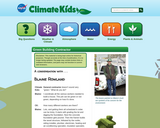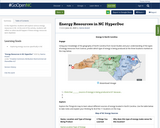
This parent guide supports parents in helping their child at home with the 8th grade Science content.
- Subject:
- Science
- Material Type:
- Reference Material
- Vocabulary
- Author:
- Kelly Rawlston
- Letoria Lewis
- Date Added:
- 10/11/2022

This parent guide supports parents in helping their child at home with the 8th grade Science content.

This resource accompanies our Rethink 8th Grade Science course. It includes ideas for use, ways to support exceptional children, ways to extend learning, digital resources and tools, tips for supporting English Language Learners and students with visual and hearing impairments. There are also ideas for offline learning.

Students answer a short multichoice survey to identify and address common alternative conceptions about fossil fuels. By the end of this activity, students should be able to identify some common alternative conceptions people hold with regards to fossil fuels and use literacy and research skills to find accurate explanations regarding fossil fuels.

This short video lesson demonstrates how cellulose, the naturally abundant tough walls of plant cells, might be the solution to scientists' search for a plentiful source of environmentally friendly fuels. Assessment and discussion questions, as well as links to additional resources, are included.

This resource explains biomass and biofuels and how they are used as alternative forms of energy.

In this activity, students will utilize tools from the Department of Energy's, U.S. Energy Information Administration, EIA site to explore energy production and consumption in the US and in their state.

This lesson is composed of three challenges, each addressing a different aspect of how to design an efficient public bus system for a fictitious town while taking into account the benefits and drawbacks of various fuel options. In attempting these challenges, students will find that there is often more than one way to solve a problem. The purpose of these challenges is for students to reason out their own logical methods for solving a problem using math and computational skills with little initial guidance.

Students conduct a simple energy audit for the classroom and estimate what size wind turbine could power their classroom under local wind conditions.

This video provides information about the causes and effects of Earth's changing climate, specifically focusing on wildlife populations and the impact global warming has on habitats.

Students will explore greenhouse gases, how they affect the carbon cycle and the human role in climate change.

An interview conducted with a building contractor provides insights into what it means to build an environmentally "green" house. This lesson is part of the Climate Kids website, a NASA education resource featuring articles, videos, images and games focused on the science of climate change.

This online game allows participants to maneuver solar panels and a wind turbine in order to provide electricity to light five homes. Background information on sources of electricity- fossil fuels, solar energy and wind energy- is also presented. This lesson is part of the Climate Kids website, a NASA education resource featuring articles, videos, images and games focused on the science of climate change.

Students will identify the need for alternative energy sources and explain how hydrogen energy might be used to address that need. They will conduct a simple experiment to describe how to use the process of electrolysis to generate hydrogen.

Students explore real-world data to learn about electricity consumption trends worldwide. They watch a video to discover how different energy sources are transformed into electricity.

Students practice graphing data, research historical events, and analyze the graphs in this guide and the Energy Information Administration's Energy Perspectives booklet to determine and explain energy trends in the United States during the last 50 years.

Students investigate the energy sources used in students' communities.

In this activity, students will learn about energy sources by playing a game. This game demonstrates that energy, the environment and economics are closely tied - obtaining one affects the other two.

This blog is designed for North Carolina's K-12 teachers and students who are interested in the topic of energy and alternative energy (nuclear and renewables). This blog is maintained by Dana Haine, K-12 Science Education Manager for UNC-Chapel Hill's Institute for the Environment, with funding provided by Progress Energy.

In this HyperDoc students will explore various energy resources in NC. At the end of the activity, students will reflect on what would happen if these energy resources were depleted.

In this HyperDoc students will explore various energy resources in NC. At the end of the activity, students will reflect on what would happen if these energy resources were depleted.